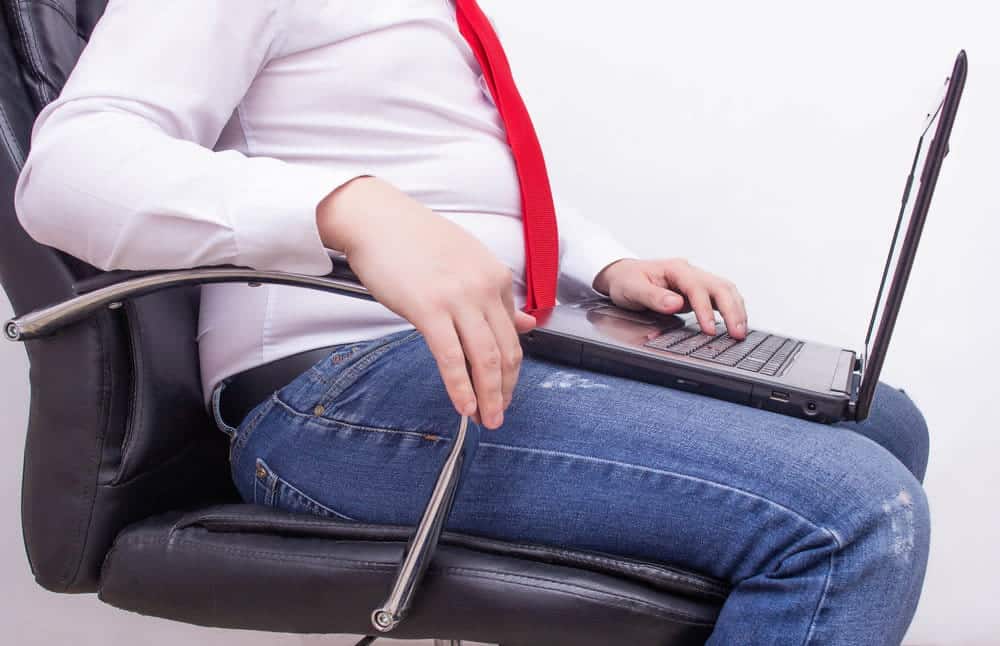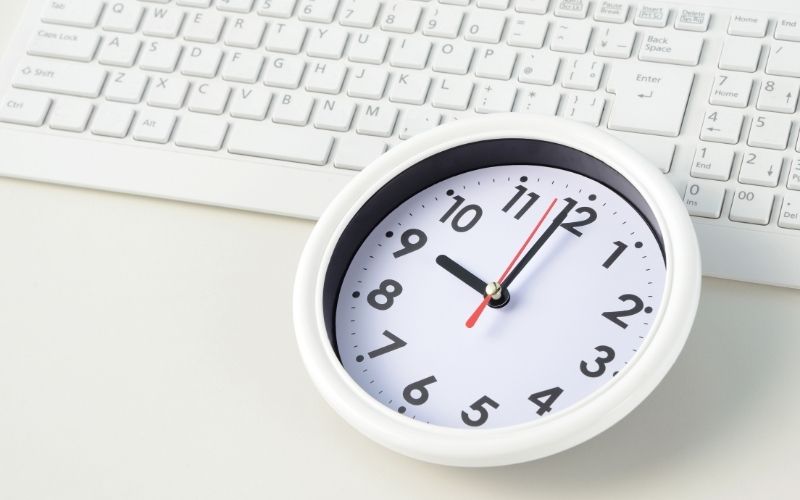Most of us spend considerable time sitting. Whether it is working from home, attending the office, or traveling for meetings, our eyes are glued to our computer and laptop screens for most of our day.
Physical inactivity is a major risk factor for abnormal blood pressure levels, cardiovascular diseases, and many other life-threatening diseases and illnesses. So how do we address this without compromising on our productivity levels?
We turn to standing desks.
The standing desk is one of the best inventions when it comes to improving blood pressure levels while maintaining personnel-work engagement. Let’s explore how it does this as well as its other benefits.
Keep on reading. You may want to get one for your workspace as well.
Table of Contents
Does Standing Reduce Blood Pressure?
Yes, it does.
To understand how, first let us learn what blood pressure is.
Understanding Blood Pressure
Blood pressure refers to the pressure that the blood exerts on the walls of your heart’s arteries. It is the force that helps blood move throughout your circulatory system, helping deliver oxygen and nutrients to various parts of your body.

If you’ve gotten a blood pressure reading, you would’ve seen two numbers. For example, 120/80.
Blood pressure is measured using two numbers.
- Systolic pressure: The pressure in your arteries while your heart is beating.
- Diastolic pressure: The pressure in your arteries between two heartbeats while your heart rests.
In the given example, “120” is the systolic pressure and “80” is the diastolic pressure. And 120/80 is also the normal blood pressure range. Blood pressure changes throughout the day based on our activities.
But, it is when these numbers are consistently higher than the ideal range that you should be concerned. A higher blood pressure reading indicates high blood pressure or hypertension.
How Standing Affects Blood Pressure
Blood pressure is affected by various factors, one of which is physical activity.
Standing up at regular intervals is advisable, especially if you work extended hours while sitting in front of your desk. Sitting for hours without any breaks will spike your blood pressure and may result in certain adverse effects such as headaches, inability to concentrate, and dulled brain function.

Interrupting your long sitting sessions by standing up and giving your body a little stretch. You can do some simple exercises at your work desk or even go for a small walk every hour for 5-10 minutes. It will not only promote better blood circulation but also allow you to become more active and help keep your blood pressure in check.
Blood pressure is also affected by the position of your body. When you stand, most of your blood will pool down to the lower half of your body. And with less blood circulation toward the heart, your blood pressure decreases. Thus, standing can lower your blood pressure temporarily.
When Does Standing Become a Problem?
Although standing is a much healthier alternative to extended sitting, the narrative changes when you regularly stand for extended hours. A 2018 study found that people in occupations requiring extended periods of standing have twice the risk of developing heart disease compared to those who work while sitting.

Having blood accumulate in the lower half of the body means that the blood circulation to the heart will move against gravity. Your body will need to work harder, which is evident in the increase in heart rate, to get the blood back up. This results in more pressure in the veins and oxidative stress, both of which increase the heart disease risk.
Some conditions also discourage regularly standing up from a sitting or lying position. An example is orthostatic hypotension, a medical condition that results in a significant reduction in blood pressure right after standing, which can cause lightheadedness, dizziness, and fainting in more serious cases.
Is Sitting Or Standing Better For Blood Pressure?
It is best to alternate between standing and sitting throughout the day to regulate your blood pressure levels. Doing so ensures that you remain overall healthy and fit.
Whether you sit or stand continuously for prolonged hours without any break, both can result in abnormal blood pressure levels.
Adverse Effects of Prolonged Sitting
Sitting for extended periods can lead to several physiological issues that increase blood pressure, with multiple studies establishing strong links between sitting and elevated blood pressure levels.

One of the obvious physiological issues leading to a spike in blood pressure is slower metabolism. Too much sitting is characterized as a low-energy activity, a sedentary behavior that has low metabolic demand. Sustained low metabolic demand causes the capillary calibers to shrink and increase blood pressure.
Moreover, the typical seating posture when one is working creates constrictions in the lower body’s blood vessels, especially those in the limbs, and hinder blood flow patterns.
Adverse Effects of Prolonged Standing
Excessive hours of standing are also not encouraged. Aside from fatigue, it puts too much stress on the body to maintain proper blood flow, thus increasing the risk of heart disease.
It is ideal to stand up and perform moderately intense activities for at least an hour daily to offset the effects of extended sitting periods.
Does A Standing Desk Help Your Blood Pressure?
Not only will standing help your blood pressure, but it’ll probably be the best investment you’ll make for your health, especially if you have a sedentary working routine that involves sitting for long hours.

It has long been established that being healthy improves productivity. Unfortunately, with occupations involving desk work where extended sitting hours are the norm, productivity and staying healthy end up at the opposite ends of the scale, fighting for personnel hours.
And this is where the genius of a standing desk comes in. It allows for health and productivity to coexist within the workspace. A standing desk will allow you to keep working while having the option of changing positions.
People who suffer from high blood pressure are suggested to routinely shift between standing desks and sitting on office chairs. When you take a break from sitting and move to a standing desk, you encourage the proper blood flow throughout your system. It improves your heart rate, your energy expenditure also increases, and you’ll function better.
FAQs
Does Sitting At A Desk All Day Raise Your Blood Pressure?
Yes, sitting all day elevates blood pressure levels. Studies have shown that when you sit at your desk for prolonged hours, you end up with slower metabolism since it’s a low-energy activity. The sustained low metabolic demand exposes you to various health concerns.

How High Blood Pressure Affects Your Overall Health
High blood pressure, accumulation of fat around the waist, increased sugar levels, increased cholesterol levels, and various cardiovascular diseases are just some of the known health concerns that come with low metabolic demand that accompanies a sedentary lifestyle.
You can see a sudden spike in your blood pressure levels if you are constantly sitting in front of your desk without taking any breaks. When your blood pressure increases, you are likely to suffer from constant headaches, heaviness in chest, difficulty breathing, and even nosebleeds.
If you suffer from high blood pressure and fail to regulate its levels, you are at risk of severe health complications in the long run. Heart attack, stroke, dementia, and aneurysm are some of the possible consequences of failing to mitigate high blood pressure.
How Long Should I Stand At My Standing Desk?
You should stand an hour for every hour or two you spend sitting. Do not exceed your standing period any more than this.

Extended standing periods can also lead to various physiological issues such as varicose veins, increased tension in the leg muscles, and excessive pressure on the tissues and tendons.
It is advised to alternate between sitting and standing with an interval of 30 minutes to an hour between each. So, if you are sitting in front of your desk for an hour or two, you should spend the next hour standing before you go back to sitting.
Standing desks have become incredibly popular owing to their utility, the myriad health benefits, and for maintaining productivity levels.
How Do You Most Effectively Use A Standing Desk?
Here are a few tips that you must keep in mind to properly use your standing desk:
- If you routinely stand for extended periods, at least 2 hours, without any breaks in between, invest in a good anti-fatigue mat. It encourages the movement of your leg muscles even when you are standing still. The mat also helps reduce back and leg pain, and save you from any discomfort.
- Navigating with a mouse and typing on a keyboard on a standing desk can put a lot of stress on your wrist when the desk height is not adjusted properly. You tend to type and use the mouse from awkward angles when the desk is too high or too low. Such awkward angles constrict the blood vessels in your wrist and sustaining them for extended periods puts you at risk of wrist-related physiological complications, such as carpal tunnel syndrome.
- Adjust the standing desk’s height so that your wrist is leveled with the mouse and keyboard. You may also want to consider wrist pads for better comfort.
- Try to take as many breaks as you can in between your standing sessions. You can sit or lie down for a while and rest. You can also take a short stroll for better blood circulation.
Conclusion
Various studies have associated sedentary lifestyle routines with a multitude of physiological complications. Standing desks are the best solution for your ailing back, constant headaches, and high blood pressure levels that come with sitting on an office chair for too long.
We have all been struggling to incorporate exercise and some form of physical activity into our routines. If you are also at your desk for hours on end, investing in a standing desk would be the best decision you can make.

My name is Vance, and I am the owner of To Ergonomics. Our mission is to improve your workflow by helping you create a supportive and welcoming environment. We hope that you’ll find what you’re looking for while you’re here.


